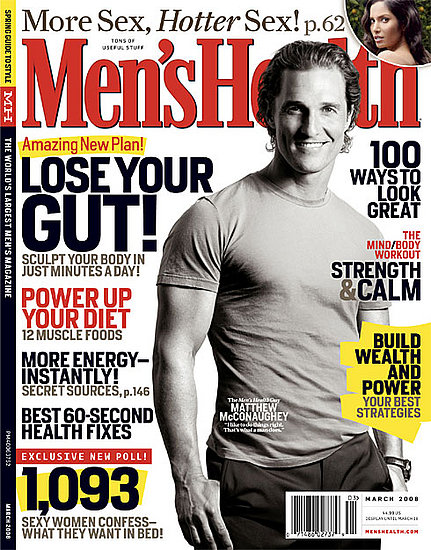Tyler Rankin's Final Project
The Body and Sex

The magazine also espouses heteronormative discourse by implying that heterosexual
behavior is the norm, and that homosexuality does not fall in line with ideal masculinity.
This heteronormativity is so prevalent and so pervasive that most readers will not even notice it.
Indeed, most people seem to assume that the "men" in "Men's Health' refers to straight men, and,
in fact, it does. It can be assumed from these ideas that homosexuals and homosexual behavior
is absolutely out of line with ideas about true masculinity. This coincides with Deborah Cameron's
study which demonstrates and states that "applied [to a group of men], 'gay' refers in particular
to insufficiently masculine appearance, clothing, and speech." Cameron also notes that one member
of her study refers to a "gay" man as "the antithesis of man" (Cameron 53). Despite the fact that
the various "Men's Health" covers feature overtly heterosexual biases, none of the captions seem
to feature any advice on building intimate, quality relationships with a sexual partner, and
instead focus on aspects of sexual conquest. Again it would seem that the masculine sexual ideal
is one of quantity, not of quality, and that only numerous partners and superficial sexual
"performance" are the most important factors in the sexual arena of ideal manhood. Lastly,
just as there was a relation to the depiction of an ideal masculine body and occupational
performance, so there is the seemingly more obvious and primal connection between the ideal
physical appearance and ideal male sexuality. The layering of these two features within aspects
of financial success also demonstrate the notion that wealthy, powerful men have more fulfilling
sex lives, and that each of these factors if closely wound up within an ideal masculine body.
These superficial attitudes towards sex demonstrated on the cover point to the next topic of
discussion, which is the primary focus of the magazine: the body.

 Go to body
Go to body
Back 

